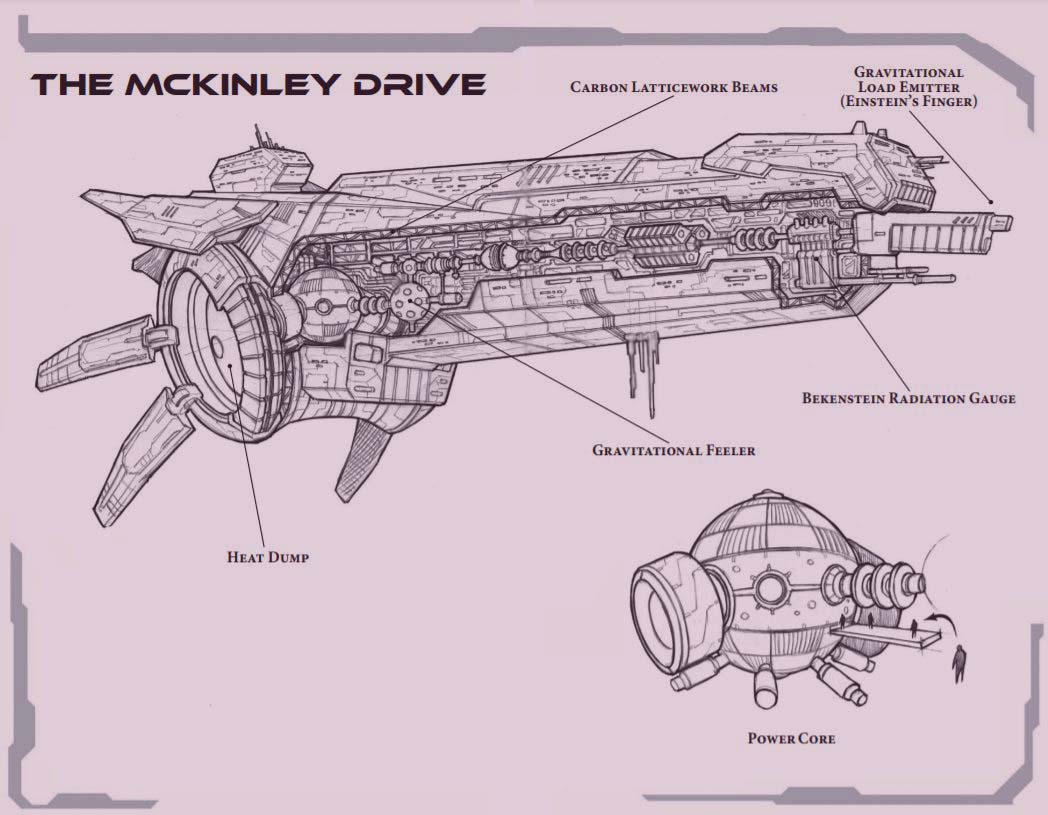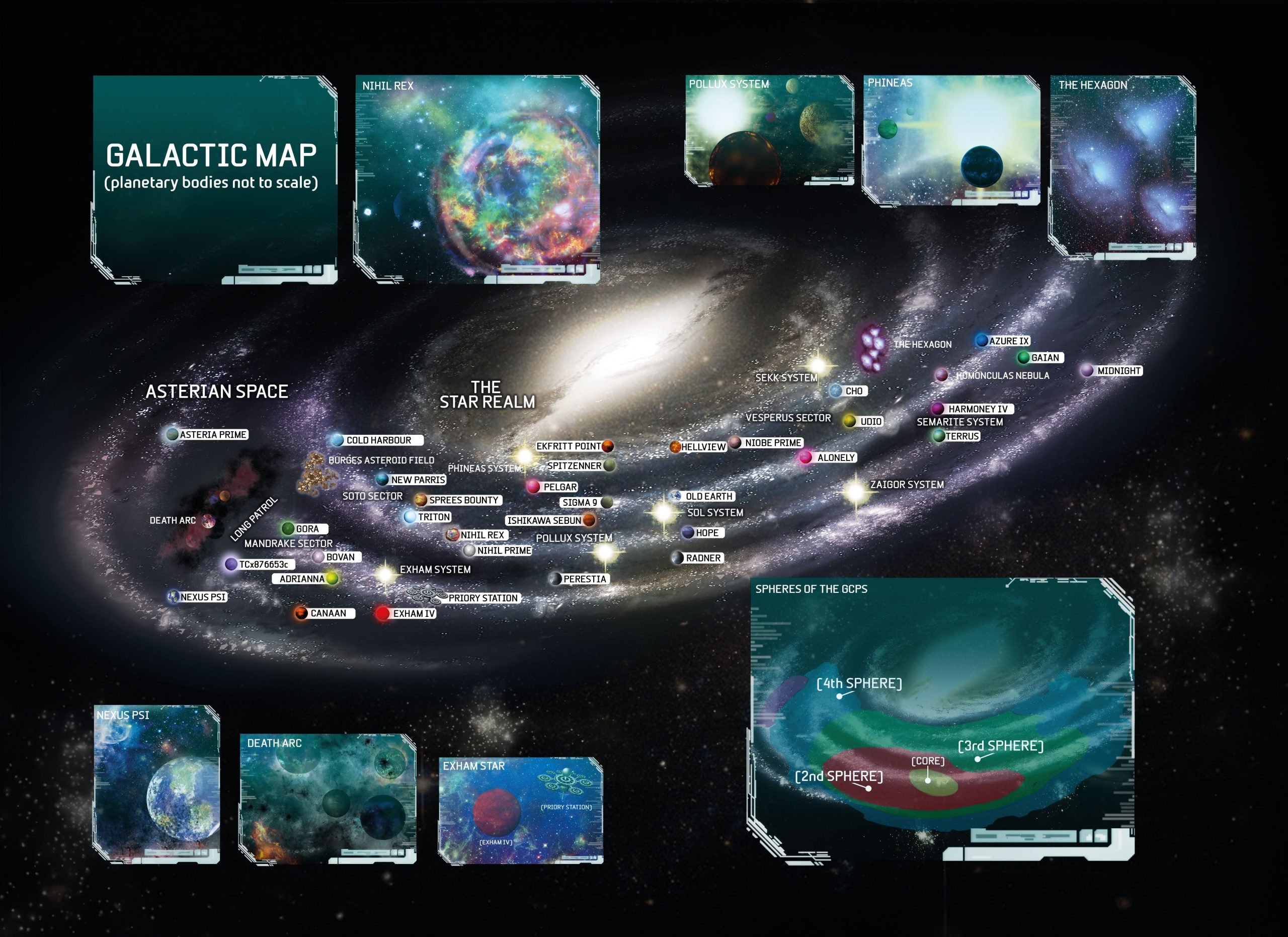Thursday Fluff – Warpath Universe – The McKinley Drive
6th Jan 2022
Jonny Mann
Hello and welcome to Thursday Fluff.
This is our new series exploring the lore and background around some of the most interesting aspects of the worlds of Mantic. We’ll be covering all game systems too, so whether it’s the creation of the Enforcers, the splitting of the Fenulian Mirror or the Salamanders and their love of sailing, this is the place to be if you want to find out more.
Today we hear the story of a talented young woman and a crucial invention: The McKinley Drive.

As lowly dust miners on the Jovian station of Callisto Major, the McKinleys were only allotted one child. That child was Isla.
From an early age it became obvious Isla was not an average girl. In Callisto Major’s primary school her parents were called in on more than one occasion when Isla had been caught disassembling the panels in the school room walls while her peers painted and learned how to read. Despite not having the vocabulary to explain, Isla conveyed that since she had dissembled and re-assembled the gravgenerator conducer, the gravity within the school precinct no longer fluctuated as it previously had.
Isla rushed through high school, graduating the standard six years’ worth of syllabuses in a single year, and almost being accepted on an exceptional scholarship to Jupiter Technical University until she was deemed to have failed the entrance exam by the invigilating professor when she corrected two of the questions. The decision was overturned after an appeal to the Jovian Governor, and in an act of supreme prescience, Isla was given lifetime tenure and a professorship, without portfolio, to pursue whatever avenue of research she chose. She was only 16 years old.
Like most geniuses, her work could barely be understood even by others deemed the leaders of scientific fields in the Sol system. From time to time, corporation militaries would approach her with the aim of securing her work in creating weapons which would give them an edge over their rivals. But McKinley’s interest never ran into violence. Instead, she would turn to what was quickly becoming her passion; the layers of existence she was convinced existed below what she called ‘the skin’ of the universe.
And then humanity made contact with the Mojat race, and the first interstellar war broke out.
War and Paranoia
McKinley was as caught up in the fear of humanity’s potential destruction as any other citizen, but while every other able body bent to the most massive war effort in human history - by manufacturing weapons or training to join the swiftly growing army, she contributed in the way only she could. At the time, her research had been focused around black holes, their potential and their cause. Their effect on spacetime had been theorised for centuries, and it was only the recent ability to inspect the phenomena up close (since the advent of interstellar travel) that their potential benefits had begun to be identified. Her work at J.U. had been instrumental in beginning to understand the structure of black holes, and that - like icebergs - most of their mass could not be seen and was somehow beneath the ‘surface’ of the universe. While the emergent militarised navies of the corporations had the requisite manpower, vessels and munitions to take war to the Mojat, it became apparent they were in severe need of a way to do so swiftly and decisively.
Little was known of the Mojat’s own machinery, so technology to hide the navies’ warships was considered potentially counterproductive if it turned out that approach could be circumvented. The preference was for a way to quickly move armadas from one area of space to another, and to outmanoeuvre the Mojat using tactics last seen during the sea wars of the 20th Century. And it just so happened that Isla McKinley had been working on a technology which might do just that. It was the original group of the seven mega corporations who first approached McKinley. Their web of agents were already spread widely across the emerging GCPS and they had kept a close eye on humanity’s foremost expert on space time. She needed little prompting to translate her theories into practical applications, and the first prototype drive to bear Isla McKinley’s name was ready for testing within months.
To fully explain the drive’s mechanisms in a single document would be impossible. Universities offer doctorate courses on mere sections of the technology and its theory. But simply put, the drive is a powerful gravitic emitter fitted towards the prow of a ship. It applies a vast amount of energy to generate a localised gravitic field directly in front of the vessel, punching a small and mobile black hole into the fabric of the universe. The ship then effectively begins to fall over the hole’s event horizon, but as the ship moves forward the drive keeps the black hole the same distance from the ship, allowing it to ‘fall’ forward in perpetuity, or until the drive is turned off. This ‘fall’ moves the ship at speeds faster than light, but due to the gravitational effect on space time, the time spent moving is vastly compressed until the drive is de-activated and the ship returns to real space, shortening the apparent travel time immensely.

Because of the urgency of their need it was deemed prudent to test the new drives in real-life conditions rather than computer simulations. The ship which bore the honour of the first ever test run was the Mars Corp. Navy frigate Phoebus. To best judge the drive’s efficacy the MCN Phoebus was fully crewed, armed, and running battle drills when the drive was triggered. The frigate disappeared from all scanners and known space, taking all 800 crew with it. It is a sign of how indulged McKinley had been over her life that the loss of 800 men and women did not seem to affect her at all, and she demanded another, identical ship to run another test on a modified drive. And just a standard month later the MCN warship Warden also disappeared from space during its own test run, followed soon after by the Mi-Gan cruiser Pioneer. In all, over 2,000 navy personnel were lost before the decommissioned Magani cruiser Giant performed the first ever successful McKinley drive journey, travelling from Io to the inner edge of the Kuiper Belt in less than two seconds – a distance of four billion kilometres at almost twice the speed of light.
The Magani Giant can still be viewed, and is a living museum on J.U.’s Pollux system campus. After slight modifications to shore up the potential travel distance and reliability, the successful drive was mass-manufactured and fitted into every available navy warship, and with as few practice manoeuvres as possible the first strike was launched at the Mojat. The resulting, and short-lived, war within the Pollux system is well known. The ship-board recordings and comms are widely available across the G-Net as educational and historic resources. But the sterile, level-voiced orders captured on the digital recording from centuries ago can do little to recreate the sheer surprise and terror the Mojat must have felt when, to their perception, thousands of human warships seemed to just appear within their star system; weapons loaded and just waiting for targets. The resulting massacre saw the extinction of the Mojat in a single military action, with the Mojat homeworld being impacted by so many munitions its mantle cracked and was thrown from its orbit. To this day its trajectory is steadily decaying, slowly surrendering the ruined planet to the Pollux star’s gravity and eventual, millennia-distant death.
The Galactic Web
Despite its vastness, space is far from empty. Besides stars and planetary systems, there are an unknown and uncountable number of rogue planets, asteroids, wrecks and artificial stations throughout the void, and they all pose a threat to inter-planetary travel. Even a field of pebble-sized rocks would puncture a space ship travelling through it at a high enough velocity, leaving it perforated and at the mercy of the void. The McKinley Drive avoids this issue neatly. The black hole generated before the ship acts as a buffer, pushing aside debris or sucking it through to whatever lies on the other side of its gravity well.
But this only works for objects below a certain mass - small asteroids, rocks, or wrecks of shuttles. Anything larger, such as a planetary satellite or even a planet, would have catastrophic effects, for the McKinley-driven craft and for the object hit. Because of this, a voyage across the GCPS by McKinley Drive is not one, uninterrupted journey. Instead, a navi-computer plots a course in space it knows will not contact any objects of a larger size. At that point it will drop back into real space, re-calibrate, and once more re-engage the Drive. Depending on the journey length, this could happen many dozen times on a single trip. This constant dropping into and out of McKinley travel has developed a fairly well established set of travel routes across the GCPS, known as the Galactic Web, with common way-points, such as Priory Station based at Exham IV, becoming busy and lucrative hubs for the corporations which control them. However, this has also led to the less well-used waypoints becoming dangerous, and a haven for pirates. It also means there are immense tracts of space within the GCPS borders yet to be fully explored as most traffic sticks to the well-used, albeit uncertain travel routes.

A Step Too far
After the success of the Mojat War, Isla McKinley continued to work on her drive to the exclusion of all other work. While achieving speeds of twice the speed of light was a feat considered impossible to the best physicist’s minds for centuries, she believed it was only the beginning, and she turned her attention to improving the drive’s potential. She was recorded as never being satisfied that only ships over or under a certain mass could effectively use the Drive. She identified that a certain mass would add stability to the ‘fall’ over the black hole’s event horizon, and succeeded in offsetting this issue through inventing a series of stabilising engines for smaller craft, but even so, the mass of a craft required was still considerable.
Her last attempted contribution to science was a development of her drive that, rather than allow a ship to fall over a black hole’s event horizon, would instead curve the vessel around the gravity well before ejecting it from the other side, effectively sling-shotting the ship, attaining a velocity which would make space travel trivial. So sure of her own calculations, Isla McKinley insisted on being aboard the first test flight of her new drive. Like the frigate Phoebus, the first ever ship to attempt a McKinley jump, Isla McKinley disappeared into a black hole she herself generated. She was only 34, and it’s ironic that she was the only person who might have accurately theorised what has become of her.




